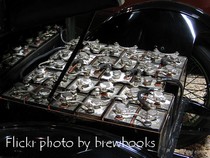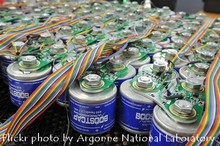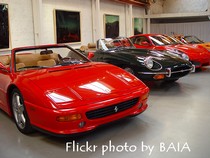The Hyundai ix20 is a stylish new addition to the mini MPV segment, and is a generously equipped and practical small car that's hard to fault. Build quality is on a par with Japanese rivals like the Toyota Versoand Nissan Note. With seating for five, there's plenty of space inside, and a sliding rear bench and big boot makes it a great choice for busy families. Quiet and comfortable on the motorway, the ix20 is easy to drive. Hyundai's unlimited five-year warranty means ownership is a hassle free experience. There's lots of equipment fitted as standard across the three trim levels. Both the 1.4-litre engines get Stop
& Start technology to improve fuel economy and give class-leading emissions figures, making it very cheap to run.
Drive (With a six speed gearbox, the diesel is better for longer journeys)
There are three engines available – a 1.4 and 1.6-litre petrol and a 1.4-litre diesel. The 1.4-litre engines both come with 89bhp, the petrol is nippy around town, but thanks to an additional 83Nm of torque and a six-speed gearbox, the diesel is better for longer journeys, but has to be worked quite hard to make progress. The 123bhp 1.6-litre is only available with a four-speed automatic gearbox, and can’t match the class-leading fuel economy of the smaller engines. The ix20 has plenty of grip and corners well, but isn’t quite as poised as some rivals. The steering is light enough to make it easy to manoeuvre but isn’t as direct or accurate as rivals like the Nissan Note, and it feels like a big car to park.
Reliability (The neat interior is well built and sturdy)
The ix20 has yet to be crash tested, but the i20 hatchback on which this car is based scored a maximum five Euro NCAP stars overall, performing well for both adult and child protection. An electronic stability program is fitted to all models, as are anti-lock brakes, twin front airbags and Isofix child seat mountings. There is also a hill-start assist that gently applies the brakes when stopped on an incline, preventing the car from rolling back. The neat interior is well built and sturdy, and the materials used all give a reassuring air of quality.Hyundai has a growing reputation for reliability and the i30 hatchback was the overall winner of the 2010's Driver Power Survey.
Practicality (The wide, flat loading bay makes loading bigger items easy)
The 440-litre boot is above average size for this kind of car, and what's more, it swells to an impressive 1,486 litres when the back seats are folded flat. The wide, flat loading bay makes loading bigger items easy, and the rear seats slide independently from each other, allowing you to adjust the amount of space in the back. The glovebox is large and there are plenty of storage spaces dotted around the dash. The boot can be also be split in two via a handy dividing panel, and the wide-opening doors make it simple to get in and out.
Value for money (Even entry level ‘Classic’ models get air-conditioning, and traction control)
The ix20 is one of the best value mini MPVs around, undercutting rivals like theVauxhall Meriva, and offering more equipment as standard. Even entry level ‘Classic’ models get air-conditioning, and traction control. For an extra £1,100, the mid-range Active adds 16-inch alloy wheels, leather steering wheel, all round electric windows and reversing sensors and Bluetooth to the extensive kit list. Top spec Style models get a panoramic glass sunroof, front fog lights and folding door mirrors. The diesel and petrol engines are similarly powered, but there's a £1,400 premium on the more efficient 1.4-litre CRDi. Thanks to the superb warranty, resale values should be strong across the range.
Running costs
The Hyundai ix20's 1.6-litre petrol automatic is the most expensive to run, but even that offers 43.6mpg and emissions of 154g/km - that means it falls into Road Tax Band G, which costs £155 a year. Lowest running costs come with the 1.4-litre diesel with ISG, it returns a massive 65.7mpg and 114g/km, so Road Tax costs only £30 per year. The other petrol engine falls in the middle of these two, so none of them will be costly to run. Across the range, insurance is around two groups lower than major competitors, making the ix20 one of the most affordable cars of this type.





